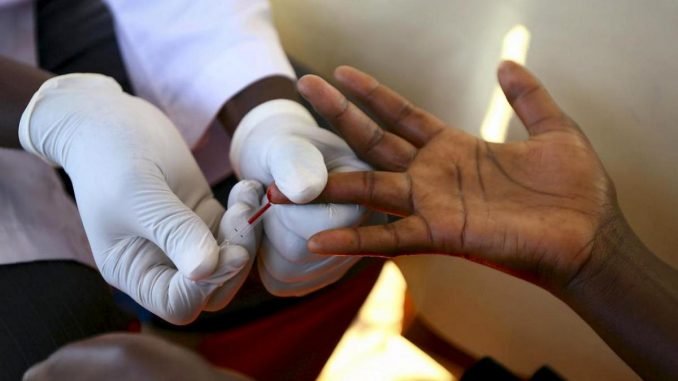
Mbarara, Uganda | By Michael Wandati | Residents of Mbarara City are expressing deep concern over a significant spike in new HIV/AIDS infections reported over the past six months.
Dorcus Twinabeitu, the City’s HIV/AIDS Focal Person, revealed that between December 2023 and May 2024, over 1,000 new HIV cases have been recorded in Mbarara. Speaking at a media training and dissemination of HIV prevention messages in western Uganda, organized by the Uganda AIDS Commission, Twinabeitu emphasized that the most alarming trend is among young girls.
Twinabeitu highlighted that from October of the previous year to March 2024, the number of females testing positive exceeded 600, while males accounted for 400 cases. Among these, 185 cases were adolescent and young girls aged 20-24, with an additional 158 cases in the 25-29 age group.
“Mbarara has increasing education institutions like universities and tertiary institutions with young girls that want to meet some standards yet their families can’t afford – so they end up sleeping with older men who are already working and engage in cheap sex where they contract the virus,” Twinabaitu said.
The surge in HIV/AIDS in Mbarara City cases, Twinabeitu explained, can be attributed to various factors including poverty, drug abuse—particularly alcohol—and domestic violence.
She said that the high numbers of new infections are a result of many young girls engaging in unprotected commercial sex with men over 45. Twinabaitu said that in Mbarara, the number of new HIV cases from October last year to March this year, is higher in women than in men – noting that 628 women have been diagnosed compared to 408 men.
She added that the prevalence is high among young women, with 185 cases among those aged 20-24 and 158 cases among those aged 25 to 29. In contrast, 34 cases were registered among boys aged 20-24 and 91 cases among those aged 24-25.
Michael Matsiko, the head of Uganda AIDS Commission for the southwestern region, has expressed concern over the decrease in young girls and women adhering to Antiretroviral Therapy (ART). Matsiko emphasized that this decline undermines efforts to suppress the virus and reduce further infections, as the intended goal may not be achieved.
He attributed the dropouts to various factors, including ignorance of the dangers of discontinuing treatment, drug fatigue due to daily dosage, patients’ relocation, and the desire to conceal their HIV status due to stigma.
Dr. Stephen Asiimwe, the head of research at Uganda AIDS Commission, echoed Matsiko’s concerns, noting the rising number of new infections contributing to higher HIV prevalence in the Ankole region compared to the national average of 5.1 percent.
Read Also: Mayors’ Alliance proposes compulsory HIV/AIDs testing for Ugandan men
Apart from Buhweju and Mitooma, which exhibit slightly lower HIV prevalence rates, the other 10 districts and one city in the Ankole region have higher prevalence rates. Mbarara district, in particular, records the highest prevalence at 14.4 percent, followed by Kiruhura at 9.5 percent and Bushenyi at 9.2 percent.
Additionally, Mbarara City reports a prevalence of 8.1 percent, while other districts such as Sheema, Ibanda, Rubirizi, Ntungamo, Mitooma, Buhweju, and Isingiro also demonstrate elevated prevalence rates.
Moses Bindeeba, a person living with HIV, urged the government and other stakeholders to prioritize the recruitment of sign language experts in health centers to support deaf individuals in accessing HIV-related services.
This call underscores the need for inclusive strategies to address the diverse needs of all populations affected by HIV/AIDS in Uganda’s southwestern region.



